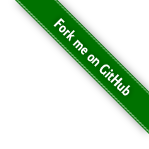#778 AT89C2051 LCD Control
Demonstrates HD44780-based LCD control using the AT89C2051 (8051) microprocessor, compiled with SDCC on macOS.

Notes
This is a demonstration of how to control an HD44780-based LCD such as the QC1602A. See LEAP#749 HD44780-based LCD Modules for more information about such displays.
In this example, we will be controlling the 16-pin interface directly. No libraries are used.
Circuit Design
Designed with Fritzing: see LcdControl.fzz.


Code
All the code is in a single file: src/LcdControl.c.
The main function:
- calls
init_lcdto initialise the display - calls
write_welcometo send a message to the display (“MAKE MORE PROJECTS”) - goes into an endless do-nothing loop
All LCD interaction is accomplished with the send_command and send_data functions.
These simply:
- load the command/data into the P1 8-bit register
- set the appropriate Register Select (RS) - command or data
- toggle the enable line high then low, with a suitable delay
/*
* Command: send LCD command. Assumes RW=0 (write mode) is hard-wired.
*/
void send_command(unsigned int command_value ) {
P1=command_value;
RS=0;
E=1;
ms_delay(10);
E=0;
}
/*
* Command: send LCD data. Assumes RW=0 (write mode) is hard-wired.
*/
void send_data(unsigned int data_value) {
P1=data_value;
RS=1;
E=1;
ms_delay(10);
E=0;
}
Programming
The src/Makefile is setup to compile the code using the SDCC compiler .. running on macOS in this instance:
$ cd src
$ make
sdcc -mmcs51 --code-size 2048 LcdControl.c -o LcdControl.ihx
packihx LcdControl.ihx > LcdControl.hex
packihx: read 21 lines, wrote 31: OK.
And program the chip using at89overlord and
the LEAP#394 AT89C2051 Programmer:
$ at89overlord -p /dev/tty.usbserial-2420 -f ./LcdControl.hex
# Initializing the programmer...
# Initialized!
# Confirming chip ID...
# Confirmed!
# Erasing flash...
# Done!
# Writing flash...
# Done!
# Verifying...
# Done!
Testing
I have the circuit setup on a breadboard with the LEAP#780 AT89C2051 Breadboard Adapter:

